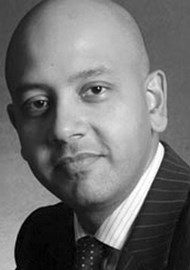What this article is about
I will discuss areas that I consider to be important aspects of the patient consultation with particular regard to how to: ask the right questions, examine the patient, discuss the limitations of surgery, explain the risks of surgery and conclude the consultation.
How to take a history
In cosmetic consultations, patients will often take the initiative and answer the initial questions by asking for a particular procedure. For example, sometimes I have asked a patient “What would you like to talk about today?” and I have received a reply asking for a particular procedure – “I would like my eye bags removed”. Often the patient is correct and this is indeed the procedure that would be best performed to help achieve their aims. However, it is important to change the consultation back to two main questions – “What is it you don’t like about yourself?” and “What are you hoping to achieve?” We should avoid jumping to the treatment step in the patient journey before taking the history and examining the patient.
Patient expectations are strongly linked to what they’re hoping to achieve. Many men wishing treatment for gynaecomastia, wish to feel comfortable when exposing their chests when going to the beach or in other social situations. Prominent and visible scars are not going to be accepted. Sometimes patients will tell us they do not like comments made by other people. Unfortunately, people make unkind comments, and performing a procedure so that a patient no longer receives unkind comments is unlikely to be successful in its aims and only careful further questioning will reveal this to be the case. The majority of patients, however, have achievable and reasonable aims.
How to examine the patient
The history tells you where the patient wants to go, the examination gives you a starting point of the patient journey. My job as an aesthetic surgeon is to consider the starting point, determine the desired end point, and to fill in the gaps with a treatment plan, so that the patient can go from where they are to where they would like to be in their aims and expectations. Sometimes, however, we can help take the patient towards their goals, but we know we will not reach the final desired point. In these cases patients need to be made aware that they are likely to notice an improvement but may not be as happy with their final result as they are hoping. Patients need to be made aware that they may have a gap between their final outcome and their expected outcome. Some patients concentrate on the improvements achieved, and some patients concentrate on the gap between their expectations and their result. Managing the ‘gap’ is an important part of the preoperative counselling that we do in our practice. Clearly it is better to address these concerns prior to any surgical intervention.
Explaining the risks
Part of the process of informed consent with any procedure includes an explanation of common but also the rare but potentially devastating risks. These should be explained in a manner understandable by the patient. Quantification of risks should be explained in a meaningful manner to the patient. The recovery process is also something that aesthetic surgery patients are often more interested in knowing about, when compared to patients having reconstructive surgery. For this reason, the consultation usually includes information on the recovery process, when a patient can go back to normal day to day activities, when they can go back to exercise, driving, work, etc. Ideally, this information should be presented to the patient in a written format, and the patient should acknowledge that they have read and understood a summary of the consultation or the risks mentioned during the consultation. I usually end the consultation by asking the patient to wait for their letter, to read the letter and to let me know if they have any further wish for a second consultation once they have done this.
Summary
The consultation process for any aesthetic surgical procedure is a complex task where the surgeon needs to determine patient expectations, evaluate the current state of the patient, and also make an honest evaluation of whether they (the surgeon) have the necessary skills and techniques to perform a procedure which will safely take the patient to where they wish to go in their surgical journey. Finally, patients are patients. They are neither clients nor customers and the normal doctor-patient relationship, with all the attending duty of care, needs to be maintained when a person is undergoing a surgical procedure.
Declaration of competing interests: None declared.
COMMENTS ARE WELCOME





